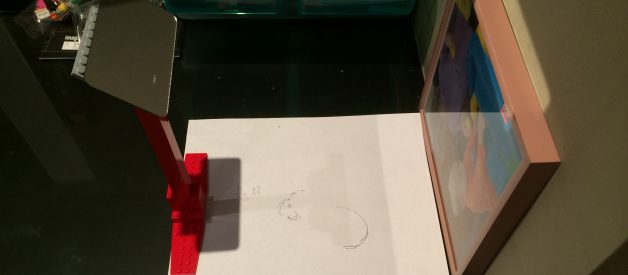It is hard to dismiss the notion that the ?Tim?s Vermeer? documentary is itself a hoax
Two days ago I sat down with my family to watch Tim?s Vermeer. This is a wonderful documentary directed by Penn and Teller about technology entrepreneur, Tim Jenison?s, attempt to replicate Vermeer?s style. The hook was that he wasn?t an oil painter but a computer graphics guy who was able to build a contraption and paint a picture that mimicked the 16th Century painter?s work with light. If you haven?t watched it yet, do so because I?m about to spoil it in the right proper meaning of the word ?spoiler.? Which is sad since it is a great movie to make you appreciate what great artists do.
I was totally hooked by this documentary. I?m not an artist but I am very interested in technology. The documentary?s theme was that the great artists invented and used a variety of tools to create their works and, moreover, any other person with those tools could do extremely well. I loved that theme. It was a ?stick it to the high faluting artist? claim that often really appeals to me. It also was the use of clever reverse engineering to unlock a secret.
The documentary has been a big success ? receiving a 89% approval rating on Rotten Tomatoes. I was completely sucked in to the premise but the next day some doubts started to rise and I haven?t been able to dismiss them.
It all began when my daughter ? who is quite the artist (and it is not just me as her father saying so) ? wanted to get the device and try the technique. The device is a mirror on a stick set at a 45 degree angle. Since the movie had been out since late last year, I figured that someone would have been promoting the device for sale. But I couldn?t find it. Which gave me reason No.1.
1. Tim Jenison?s device isn?t available for purchase
I?m an economist so this was disturbing. So that led me to investigate what success others had had in using Jenison?s technique. After all, the paintings he produced seemed magnificent and surely someone, somewhere would have tried the technique out. I searched and could not find a single example. Not one claim or YouTube video.
2. No one appears to have tried Tim Jenison?s technique
The obvious next step was to give it a go. As there was no commercial product, I did what any curious person would do, I built my own. My goal was to just replicate a sketch. I figured that getting the proportions right from a photograph would be just has hard as blending colours. I didn?t expect to do a good job but to see how it could be done.
Here is my device made out of Lego do that I could get a needed 45 degree angle.
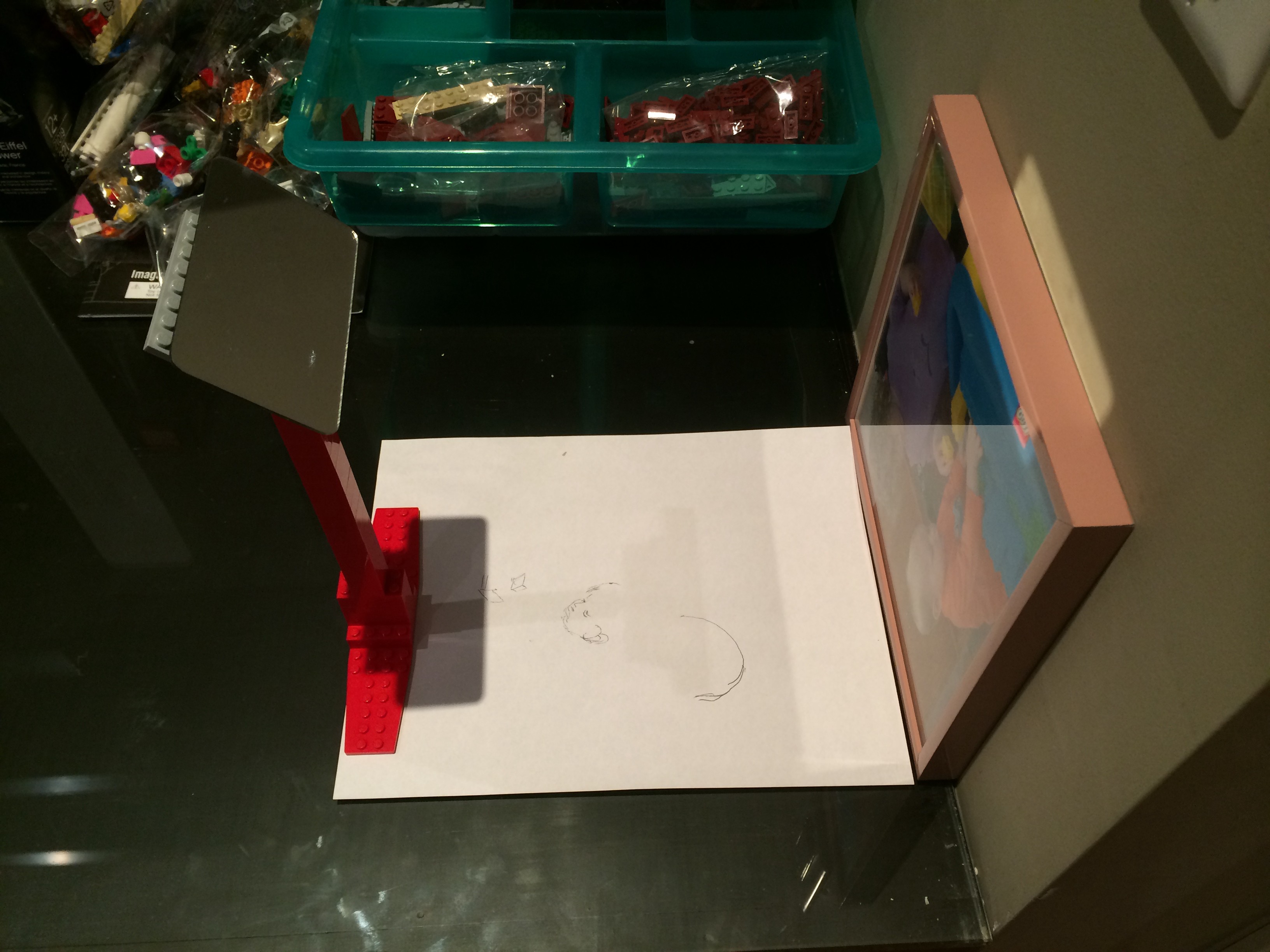
I failed for various reasons. First, it is really, really hard to get a fix on the mirror and a page. You have to close one eye and try and move back and forth to get the line. You can do something but a slight change in perspective and things go array. How you could do anything with any precision was beyond me. Second, all that would kill you. I had a headache after 5 minutes. Third, there is all sorts of other light around that I guess can be controlled for but it is a problem. Fourth, my kids tried it too and were similarly convinced that it was not going to be as straightforward as Jenison made out. None of this is a lock. I have to admit I wasn?t obsessed enough to really try everything but my own experience was enough to raise another doubt.
3. It is not easy or obviously possible to use something like Jenison?s contraption to replicate an image.
With all of this, I turned to reconsider the movie itself. Penn and Teller have made careers of magic, illusion and taking people for a ride. They have also been noted sceptics. They put themselves behind and inside this entire documentary (which they wrote) using just that: being sceptical about claims that artists like Vermeer were sheer genius working free of technology as art historians (mostly) like to think. But what if that wasn?t their target? What if their target was ?technology types? who like to think there is no art in illusion? What if their target was me?
4. Penn and Teller have all the incentives in the world to produce a hoax documentary
A hoax of this kind would fit Penn and Teller?s mantra and reputation so it isn?t a stretch. They just needed to find the right hero ? and Tim Jenison really fits the bill here being a lifetime tinkerer and in a technology field that is very closely related to the production of old-style art ? graphic design. They didn?t have to draft too many people to be part of what might be just entertainment.
This was enough to start picking apart the movie. The first thing is that you never, ever see the full production of any work by Jenison in the movie. The claim is that they had 2400 hours of footage that they cut down to 80 minutes. Well, this is the Internet age ? where?s the time lapse of the whole thing?
5. They never show Jenison doing more than a few strokes.
Of course, that means that someone else produced the paintings we see. But it isn?t a stretch that they found an artist for that.
But there are other issues. For one, Jenison attempts to go and see the original Vermeer of the Music Lesson ? a painting he is going to spend 5 years trying to replicate. It is in Buckingham Palace and, initially, he is not allowed to see it and then it is said that he got 30 minutes with the piece but with no cameras. But as this review by the Guardian?s Jonathan Jones notes:
The film performs a crude sleight of hand by never showing us a closeup of the real Vermeer painting. The masterpiece belongs to the So it?s a film about a man attempting to replicate a poster.
The original painting is not kept hidden away in some royal vault. Last summer it was in an exhibition at the National Gallery.
6. There was ample opportunity to study the original Music Lesson
Jones does not pay too much attention to this as his target is, as the film?s makers wanted, the very notion that Jenison could replicate a Vermeer. And he isn?t the only one. There are several critiques and they actually raise good points. The best is this one. However, these basically suggest that Vermeer didn?t use something like Jenison?s technique and Jenison couldn?t have replicated what the master had done. They don?t suggest Jenison didn?t do something. Indeed, Jones noted:
Was the instrument hypothesised by Jenison the actual device Vermeer constructed for himself? Again, perfectly possible. Got no problem with the science at all.
But we should have a problem with the science. When I tried this out, I couldn?t see how the parallax effect was dismissed. There was some distortion there. Also, it would have taken a ton of work to keep everything straight. Even centring the image on a point would have lead to false directions.
Then again, what do I know about the science? Not a lot was given in the movie. There was a claim that the human eye can?t process light the way Vermeer seemed to and they had a real neuroscientist say just that but then again we can see the light change and so just because we can?t see the illusion does not mean the illusionist did not understand it and look for it in its painting.
So let me turn to the movie itself to see if there are clues as to a potential hoax. After all, it is one thing to do this but a real hoax should be obvious once you have broken the magic spell.
The first thing I looked for was in the credits to see if anything was out of place. Apart from thanking ?Steve Martin? for no apparent reason, the credits did not reveal anything.
But perhaps the main issues arose in the movie itself. First of all, Jenison does not just undertake to paint Vermeer?s music lesson. Instead, he rebuilds the exact room Vermeer used. This is Jenison in the whole Thor Heyerdahl mode. Fair enough. But here is the crazy part: he can?t get the furniture, mirrors, throw rugs, costumes, windows, floor tiles and harpsicord so instead of procuring an expert to make them he decides to learn to make them himself! It takes months. But for what purpose? In what way does making the furniture himself add authenticity. It is also completely implausible. You can?t just pick up those skills. His attempt is comical.
7. It makes no sense to make three hundred year old furniture yourself
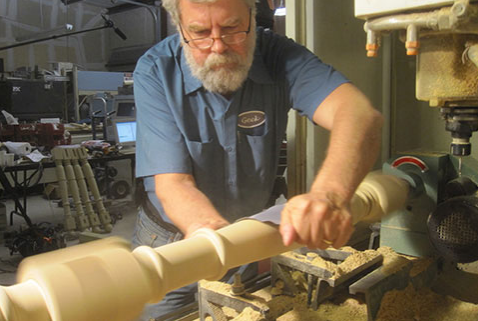
As you watch that part you think this guy is crazy but dedicated. The point is that, having supposedly made the furniture, spending 100 odd days doing meticulous painting is easy to stomach.
But suppose you spend 100 days painting a picture, what would you do with that picture? The first thing surely is to exhibit it. But that is not what Jenison does.
8. Jenison?s painting is hung in his own bedroom
Come on. At least put it in the living room.
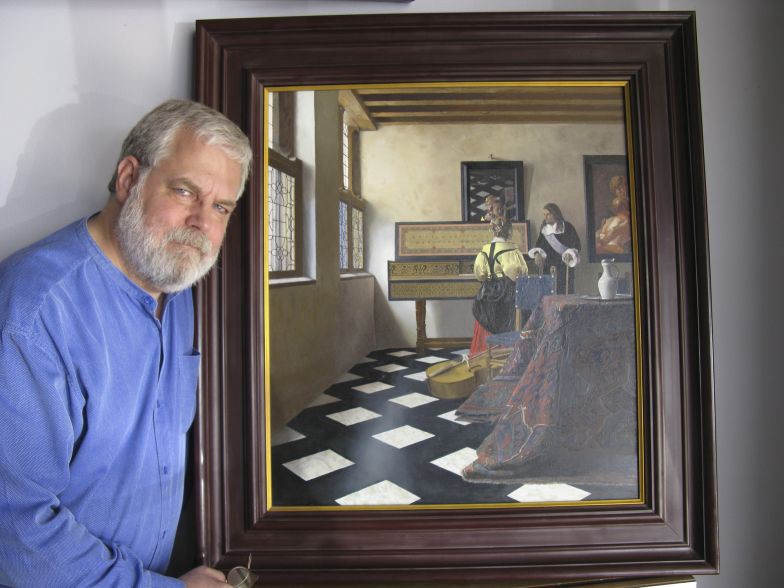
Wouldn?t an achievement like this warrant going to the ?technology sceptics? and seeing what they thought. The way this documentary is supposed to go is that you illustrate the controversy, you find the biggest, meanest looking sceptical against your thesis and film them saying ?it can?t be done,? then you triumph and bring them the picture and have them eat crow.
9. No sceptics are part of the documentary
The whole controversy is asserted. I?m sure it exists but my point is that you would want to turn someone towards your cause or at least make them look like an obvious fool. But that doesn?t happen. There is, in fact, no triumph beyond the inner circle who would all have to be in on the hoax if it was occurring.
I am not totally convinced this is a hoax despite the nine doubts I have raised. Any number of these can easily be disproven should anyone of significance read this article and so I would be thrilled to be proven wrong here. Personally, I would love to learn a technique like this and produce some art. But I just don?t think that is going to happen. Go ahead, Penn Jillette, make my day.
What about my 10th doubt? I was hoping to have one but I don?t. What I do have is.
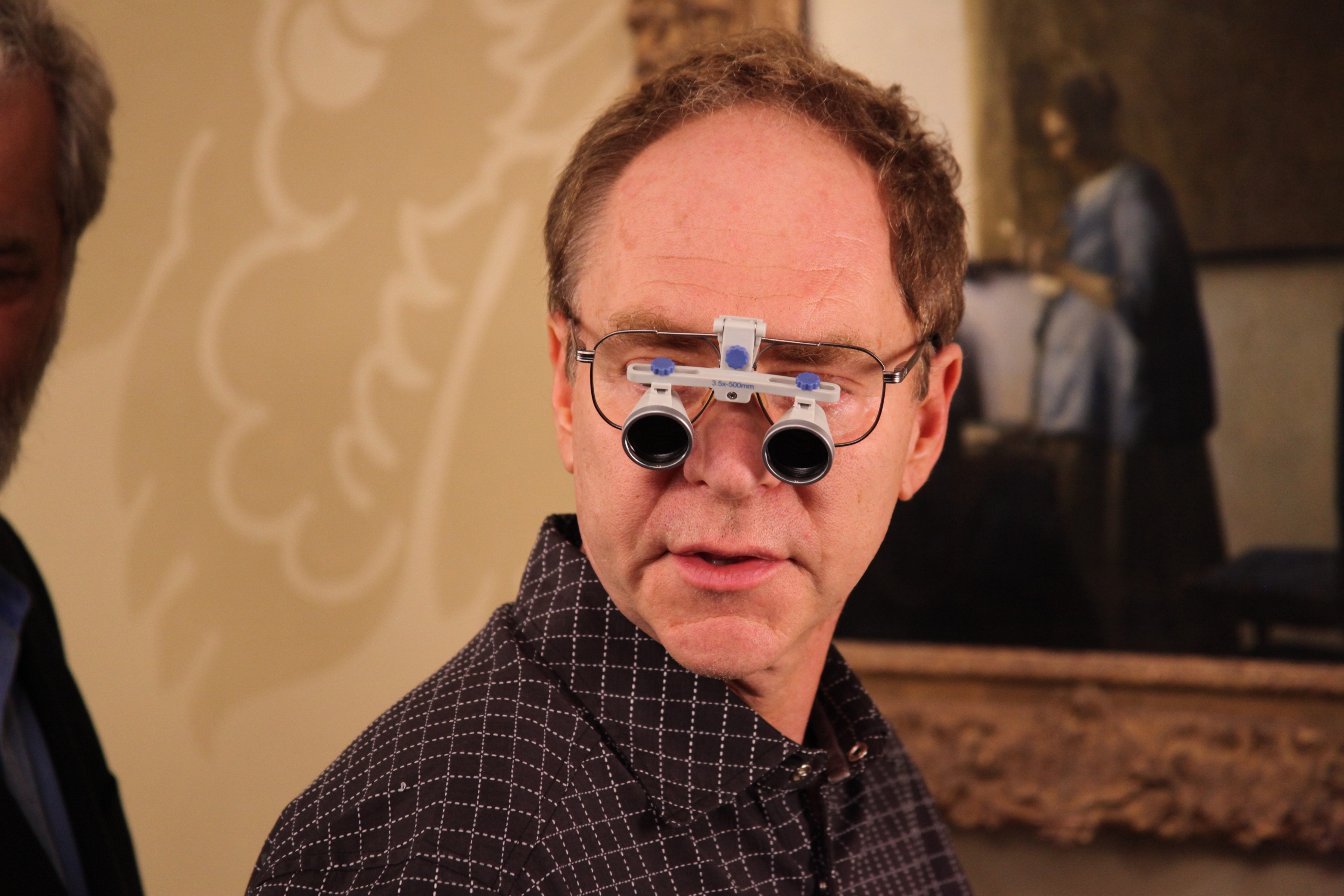
10. Teller never speaks
[Update (20th June 2014): A user called ?Straylight? who says they are the editor of Tim?s Vermeer, has responded to most of the doubts raised above. Clearly, if that is the case, then my hypothesis that this is a Penn and Teller hoax would be disproved. In particular, he did find one person on Twitter who claimed to have replicated the technique. This is one of those situations where I am more than happy to have been proven wrong.]
[Updates (6th July 2014): Some more examples of people trying out Tim Jenison?s technique have come in here and here. Also Tim Jenison himself contacted me with some instructions in terms of how to do it. My intention is to build a more robust device ? still out of Lego ? and to try it out more seriously. It might take a while. It isn?t easy.]
[Update (7th July 2014): Penn Jillette has now responded to this post. It is here at 65 minutes on his podcast. Suffice it to say, as I knew already, my hypothesis that this was a hoax is completely off-base. Of course, because I admitted it, he didn?t have an opportunity to make as much fun of me as he would have. I?m sorry for that because that would have been interesting.
Anyhow, just in case your interest isn?t strong enough to listen to the podcast, let me summarise his responses to each of the 10 doubts.
- Tim?s device isn?t available for purchase: Penn agreed this was surprising but Tim Jenison will likely produce one.
- No one appears to have tried Jenison?s technique: Penn also agrees with this as surprising but it is hard.
- It is not easy or obviously possible to replicate something like Jenison?s contraption: there I clearly got the design wrong and Penn also said that Lego wasn?t available in the 17th century.
- Penn and Teller have all the incentives in the world to produce a hoax documentary: here he admitted that I was right to be sceptical and, in fact, when they pitched the documentary several people thought it was a hoax. So I?ll take that to mean that I?m not really a crackpot.
- They never show Jenison doing more than a few strokes: obviously, that would be like ?watching paint dry? and so they didn?t do that. I or anyone else can contact them to sit through 2,400 hours of footage. What I was thinking here is that they could have had a timelapse thing but ok.
- There was ample opportunity to study the original Music Lesson: apparently there wasn?t while they were making the movie but now the Queen has agreed to a high quality scan so that is coming.
- It makes no sense to make three hundred year old furniture yourself: apparently Tim only made a chair. I still think that he didn?t have to learn woodworking but ok.
- Jenison?s painting is hung in his own bedroom: here Penn takes issue with my use of the word ?hung.? It should have said ?it is hanging? or something like that. I?m an economist not a grammatrician for goodness sake. Then again I?m pretty darn terrible on that whole proper use of English stuff. That said, it is a compliment about the painting ? get it out there.
- No sceptics are part of the documentary: so this turned out to be a big issue that they actually made a conscious choice about at the behest of Steve Martin no less. Basically, they didn?t want a straw man and also the possibility that there was some balance there. They wanted it to be Tim?s story. Fair enough.
- Teller never speaks: ha ha. ]
